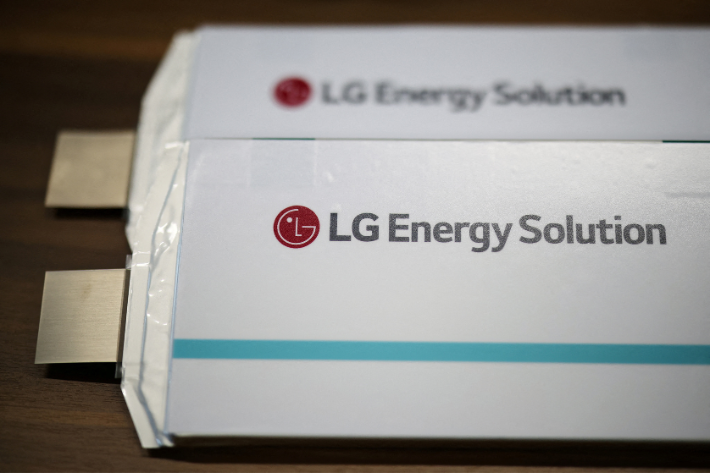China is set to boost fiscal spending – and issue more debt – to shore up its shaky economic recovery.
Some government advisers are recommending that financial policymakers lift the 2024 budget deficit target beyond the 3% of gross domestic product (GDP) set for this year.
That will allow Beijing to issue more bonds to revive the economy, policy insiders and economists have said.
The move would draw on a well-used playbook that relies heavily on debt and state spending but falls short on the deeper reforms called for by a growing number of analysts.
The world’s second-largest economy grew faster than expected in the third quarter, improving the chances Beijing can meet its growth target of around 5% for 2023.
ALSO SEE: China Tensions Leave US Firms Between a Rock and a Hard Place
$137bn debt issuance to get green light
But while the upbeat surprise gave battered China investors some cause for cheer, there are deeper concerns about the continued demise of private sector activity and the lack of longer-term reforms needed to shift the economy to consumer-led growth.
For now, the focus remains on sustaining a fragile recovery to avoid economic disaster.
“We need to make good preparations for next year and implement policies to stabilise growth. The foundation of economic recovery is not solid,” an adviser to the cabinet, who spoke on condition of anonymity, said.
“For next year, we should still set a 5% GDP growth target.”
China’s parliament is set to approve just over 1 trillion yuan ($137 billion) in additional sovereign debt issuance when it concludes a five-day meeting that began on October 20, sources told Reuters.
Such bonds will likely be used to fund water conservancy and flood prevention projects and come on top of an expected front-loading of 2024 local bond quotas.
Near-term needs trump policy reforms
China’s feeble post-pandemic recovery has exposed growing structural constraints and raised a sense of urgency around reforms to put growth on a more sustainable footing.
The debate about economic policy in China has heated up in recent months with some government advisers advocating reforms to help unleash new growth engines beyond property and infrastructure investment.
For those looking for structural reforms, the focus is on policies that spur urbanisation and household spending power, reduce the reliance on investment and level the playing field between state-owned enterprises and private firms.
Without such changes, economists warn China could be headed for a long-period of deflation and stagnant growth that fails to lift living standards for the country’s 1.4 billion people.
However, near-term needs have largely overshadowed those calls for more politically ambitious reforms and instead centre on authorities stepping up fiscal and monetary support.
Infrastructure spending
Local governments have been told to complete the issuance of the 2023 quota of 3.8 trillion yuan in special local bonds by September to fund infrastructure.
Some advisers say the central government has room to spend more as its debt as a share of GDP is just 21%, far lower than 76% for local governments.
“Fiscal policy should still play the leading role next year,” Xu Hongcai, deputy director of the economic policy commission at the state-backed China Association of Policy Science, said.
“For next year, actual growth could be lower than 5% but it cannot be too low, otherwise some problems will become more striking, such as employment and incomes,” Xu said.
The central bank, which delivered modest interest rate cuts and has pumped more cash into the economy in recent weeks, is constrained in how much it can ease monetary policy for fears of stoking capital flight and hurting the yuan, analysts said.
“There is still room to cut interest rates and reserve requirement ratios but there is a question of sustainability,” Guan Tao, global chief economist at BOC International and a former official at the State Administration of Foreign Exchange (SAFE), said.
However, policy insiders believe more fundamental changes, especially a revival of market-based reforms, will be limited due to the political environment, under which the state has increased its control over the economy, including the private sector.
An expected Communist party plenum, which is likely to take place in November and traditionally focuses on reforms, could disappoint those awaiting big changes.
“We should push reforms as many problems are structural, but reforms are difficult to implement and require political will,” one policy insider said.
Fiscal revenue growth slows
The push for stimulus comes as official data on Tuesday showed that fiscal revenue growth slowed in September.
Fiscal revenue grew 8.9% in the first nine months, down from a 10% gain in January-August, finance ministry data showed.
Fiscal revenue hit 16.67 trillion yuan ($2.28 trillion) during January-September, while fiscal expenditure rose 3.9% to 19.8 trillion yuan.
In September alone, fiscal revenue fell 1.3% year-on-year, compared with a 4.6% fall in August, according to Reuters calculations based on the ministry’s data.
Fiscal spending was up 5.2% in September, cooling from a 7.2% rise in August.
Economists say there are still some significant weak spots, particularly in the property market, which remains in a deep contraction.
According to the National Bureau of Statistics, China could achieve its full-year growth target of around 5% if fourth quarter gross domestic product (GDP) growth is above 4.4%.
Some brokerages such as JP Morgan and Nomura have lifted their forecast for China’s 2023 economic growth.
- Reuters with additional editing by Jim Pollard
NOTE: This report was updated and the headline amended on October 24, 2023.
ALSO SEE:
Small China Banks May Take $300bn Hit From LGFV Debts: S&P
China Asks Banks to Roll Over $13tn Local Debt at Lower Rates
China’s GDP Growth Rose in Third Quarter, Latest Data Shows
Moody’s Sounds Alarm For China’s Troubled Property Sector
























